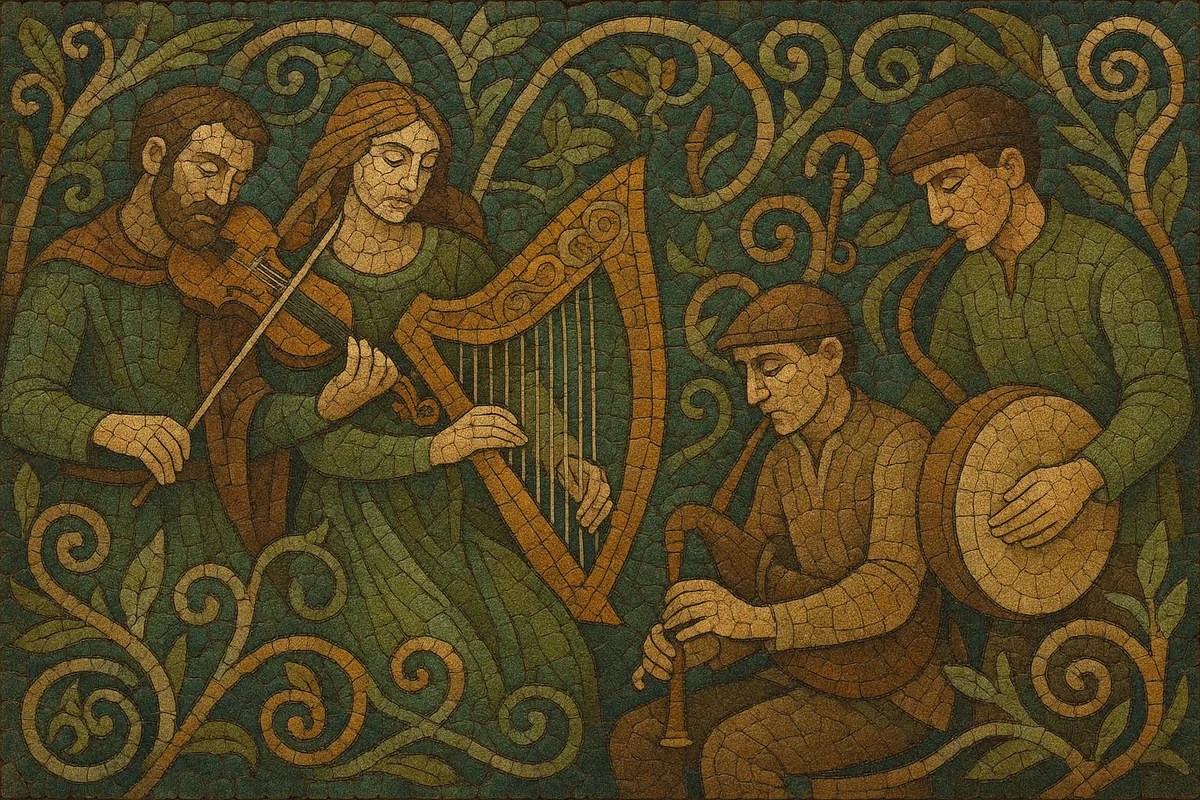Celtic folk music is the umbrella for traditional song and dance-tune practices from the Celtic-speaking regions, especially Ireland and Scotland, and also Wales, Brittany, Cornwall, and the Isle of Man. It features modal melodies (often Dorian and Mixolydian), distinctive ornamentation, driving dance rhythms, and a strong oral/aural transmission tradition.
Typical instruments include fiddle, flute, tin whistle, uilleann pipes or Great Highland bagpipes, Celtic harp, bodhrán, button accordion/concertina, and later accompaniment by guitar and bouzouki (often in modal tunings like DADGAD). Common tune types are reels (quick 4/4), jigs (6/8), slip jigs (9/8), hornpipes (dotted 4/4), polkas (2/4), strathspeys (with the “Scotch snap”), marches, and slow airs. Songs may be in English, Irish, or Scots Gaelic (and in Brittany, Breton), covering themes from love and emigration to work, history, and myth.
As a modern genre category, Celtic folk music cohered during the mid-20th-century folk revival, which foregrounded regional traditions on stages and recordings while retaining the social, participatory essence of sessions, ceilidhs, and fest-noz gatherings.
Celtic folk music grows out of centuries-old song and dance-tune traditions in the Celtic regions of northwestern Europe. Village dances, work songs (e.g., waulking songs in Gaelic Scotland), narrative ballads, and instrumental tunes circulated in community settings and were passed down by ear. From the late 18th to early 20th centuries, collectors and musicians—such as Edward Bunting in Ireland and later Captain Francis O’Neill in Chicago—transcribed and preserved large repertoires of airs and dance tunes, helping to fix regional styles in print while music continued to evolve locally.
The mid-20th-century folk revival (1950s–1970s) brought Celtic traditions to global audiences. In Ireland and the diaspora, ensembles like The Chieftains professionalized session instrumentation on the concert stage; in the 1960s–70s, groups such as Planxty and The Bothy Band expanded harmonic palettes with guitar and bouzouki, while maintaining dance energy and ornamented melody. In Scotland, bands like Silly Wizard and Capercaillie helped codify modern ensemble approaches, and in Brittany, Alan Stivell catalyzed a Breton folk revival connected to fest-noz dance culture.
From the 1980s onward, Celtic folk music interfaced with pop, rock, and ambient sounds—heard in Clannad’s early work and broader “Celtic” branding in world music markets. The Riverdance phenomenon (1994) amplified global recognition of Irish dance music. Meanwhile, sessions flourished worldwide, and archival/field-recording projects, competitions (like Fleadh Cheoil), and regional organizations supported continuity. Today, the genre spans authentic local practice to innovative fusions, yet remains centered on tune sets, modal melody, and participatory performance.


